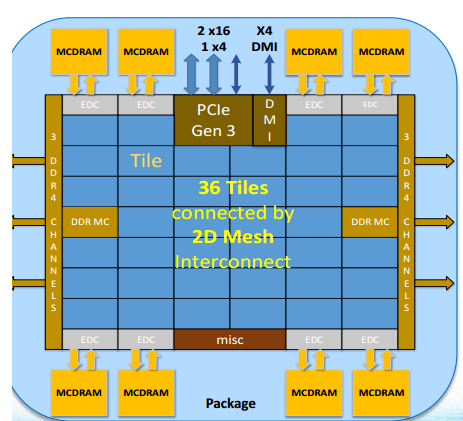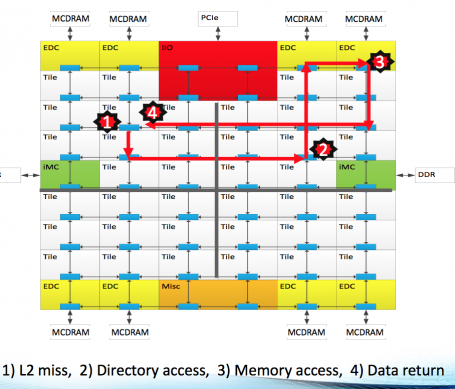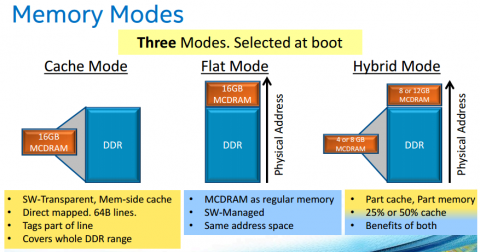The Xeon-Phi "Knights-Landing" 7250 processors in Marconi-knl have 68 cores, organized into 34 "tiles" (each tile comprising two cores and a shared 1MB L2 cache) placed in a 2D mesh, connected via an on-chip interconnect as shown in the following figure:
The KNL processor has 6 DDR channels, with controllers to the right and left of the mesh 8 MCDRAM channels, with controllers spread across 4 "corners" of the mesh.
NUMA on KNL
NUMA stands for Non-Uniform Memory Access. It represents the situation where certain cores on a node can be considered "closer" to some part of the memory space than others or if some memory on the node has different latency or bandwidth to the cores. Both of these situations occur on the KNL nodes - there are two different types of memory available with different specs, and different channels of memory are closer to different cores in the 2d mesh.
NUMA Mode Options on KNL
The most useful NUMA modes on KNL are quadrant and sub-NUMA clustering (SNCx)
In quadrant mode the chip is divided into four virtual quadrants, but is exposed to the OS as a single NUMA domain. The diagram below illustrates the affinity of tag directory to the memory. In many cases, this mode is the easiest to use and will provide good performance.


